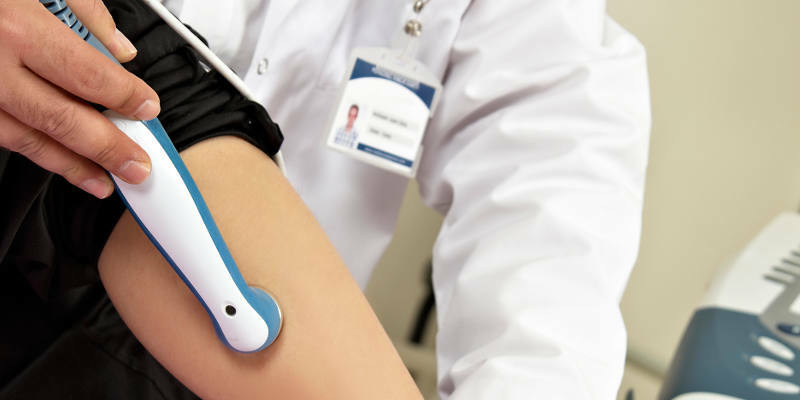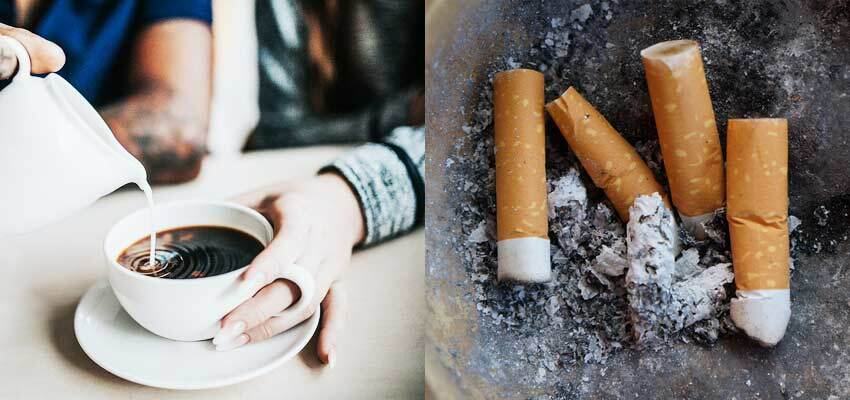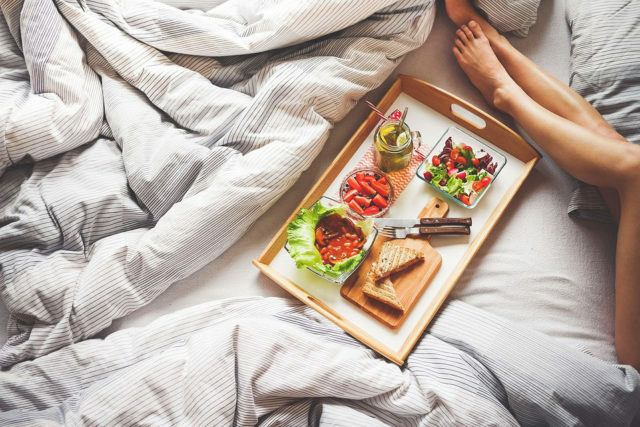 Photo: Correct diet and diet for varicose veins on the legs
Photo: Correct diet and diet for varicose veins on the legs Page contents
- 1 Diet for varicose veins - the basic principles of
- 2 Useful natural components
- 3 Treatment with the
- diet 4 The nutrition menu for varicose
- 5 See the video: Varicose Diet
Diet for varicose veins is an important part of complex therapy, aimed at alleviating the main manifestations of the disease and reducing the risk of complications. The right diet will help to lose weight and reduce the excessive strain on the lower limbs. The combination of useful products will provide the body with the necessary vitamins and microelements, help reduce blood viscosity and avoid the risk of blood clots.
The diet with varicose veins is aimed at strengthening the walls of blood vessels and improving blood circulation. A special role in this process is played by flavonoids( rutin, quercetin) and ascorbic acid( vitamin C).They reduce the fragility and permeability of capillaries, reduce blood clotting and prevent the progression of the disease. The doctor -diologist will help to make a correct diet of food taking into account the individual characteristics of the patient, possible contraindications and concomitant diseases.
Diet for varicose veins - the basic principles of
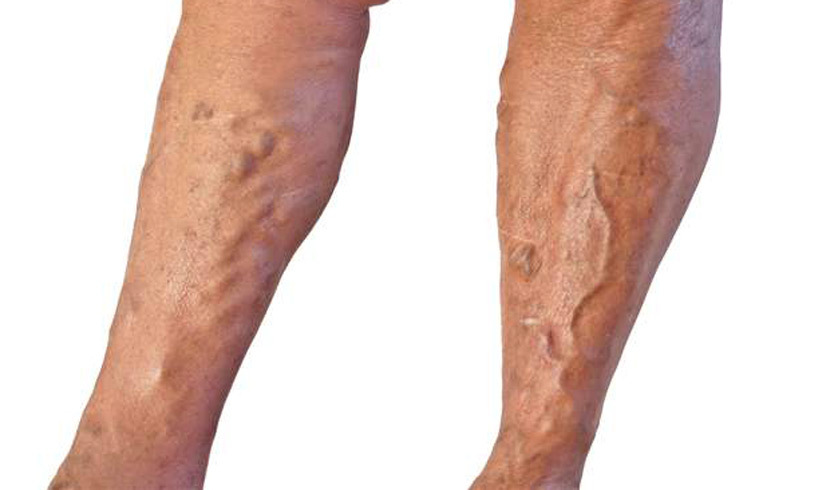 Photo: Varicose veins
Photo: Varicose veins The diet for varicose veins of the lower extremities is based on the use of products that promote blood circulation, accelerate lymph flow and prevent stagnant phenomena. A properly selected and balanced menu will prevent the development of inflammatory processes in the veins and help improve the patient's condition.
Some products can not only stop the development of the disease, but also start the process of healing the body. It is important only to know which of them should be included in the menu, and from which it is best to refuse. The main dietary requirements for varicose veins on the legs are as follows:
-
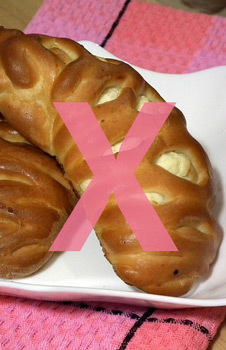 Photo: Products promoting the appearance of edema and weight gain
Photo: Products promoting the appearance of edema and weight gain The daily menu excludes products that promote the appearance of edema and weight gain. This sweet, fatty, floury, pickles, marinades, smoked products, etc.
- In order to reduce weight and reduce the viscosity of blood, the diet includes fruits and vegetables( rich in fiber), cereals, sprouted cereals( containing protein compounds).Low-fat dairy products, berries, herbs are useful.
- It is recommended 1-2 times a week to arrange unloading days, restricting food intake and increasing fluid intake.
- Food should be divided, food should be taken in small portions, every 3-4 hours, preferably at the same time. This approach helps speed up metabolic processes in the body. Breakfast is necessary - this is the basis of daily meals. Supper is recommended for three hours before bedtime.
- The risk of thrombosis increases significantly if a person smokes and consumes alcoholic beverages. Therefore, alcohol and cigarettes will have to be abandoned, even light versions( light beer, dry wine) are banned.
- Cooking dishes is recommended in a gentle way, from eating, stewing, baking. It is best to use a steamer or multivark during cooking, and completely refuse from frying in a frying pan.
If the patient is overweight, experts advise to limit the calorie content of the consumed products. For women, the daily norm is 1200Kcal, for men 1500 Kcal.
A special place in the diet of varicose veins on the legs is given to the intensification of the drinking regime. This is necessary so that the blood does not condense or stagnate in the veins. Dense blood slows the blood flow in small vessels, it is difficult for the heart to pump it up and up, so it overflows the veins and stagnates in the lower extremities, increasing the risk of blood clots.
The usual drinking water is best promoted by dilution of blood. The amount of liquid drunk should be at least 30 ml per 1 kg of weight. Some patients believe that this volume includes soup, coffee, juices. But this is not so, because in the composition of these liquids are substances that prevent the liquefaction of blood.
 Photo: drinking mode
Photo: drinking mode Especially cautious should be treated with strong tea and coffee, which contribute to dehydration of the body. But herbal and green teas, compotes, fruit drinks, fresh juices( from berries, tomatoes, oranges, apples) are very useful. They saturate the body with the necessary vitamins and minerals.
But they should not be included in the volume of consumed liquid. Thus, only the drinking water can affect the viscosity of the blood, the volume of which should be from 1.5 to 2.5 liters a day( depending on the weight).
Proper nutrition with varicose needs to focus on maintaining liver function. It is this body that produces substances that affect the viscosity and coagulability of the blood. Therefore, it is so important to exclude from the diet fatty, fried and spicy dishes, as well as products containing preservatives, artificial colors, stabilizers and other chemical components.
Varicose veins are treated quite well with the help of the modern preparation of Varyius gel.
Useful natural components of
For problems with blood vessels, preference should be given to products containing fiber, vitamins, flavonoids, trace elements and other useful components. In what products are they contained, and what are the positive effects?
 Photo: Vegetable fiber
Photo: Vegetable fiber - Bioflavonoids - contribute to maintaining the tone of the veins and strengthening the vessels. Contained in fresh fruits and berries. Especially a lot of them in cherry, cherry, citrus, greenery, green tea, legumes.
- Vegetable fiber - found in fresh fruits and vegetables, legumes, cereals, whole grains, bran. The biological value of fiber for the body is enormous. This component helps to lose weight, prevent vascular disease, remove toxins from the body.
- Vitamins .The most important vitamin that is responsible for the health of blood vessels is the routine. It is found in citrus fruits, nuts, black currant, green tea. No less important are vitamin C( ascorbic acid) and vitamin E( tocopherol).The first of them reduces blood coagulability, strengthens blood vessels and reduces inflammation, and vitamin E - is a powerful antioxidant that prevents the damaging effect of free radicals. You can find a complex of necessary vitamins in fresh vegetables and fruits, vegetable oils, sprouted wheat growth, egg yolks.
- Microelement. Patients especially need copper, potassium, magnesium. These useful substances are found in seafood, sea fish, sour-milk drinks, greens.
What foods for varicose veins are allowed, and what should I give up? Let us dwell on this in more detail.
Treatment with the
diet The basis of the diet for varicose should be products containing fiber, vitamins, microelements, proteins, bioflavonoids. This will strengthen the vessels, make them more elastic and help fight stagnant phenomena.
List of permitted products
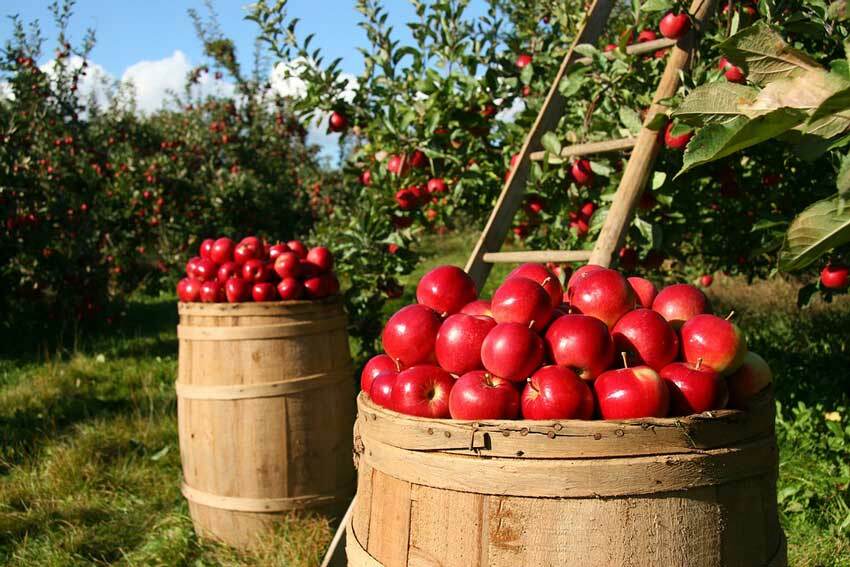 Photo: Fresh fruit
Photo: Fresh fruit - Fresh vegetables and fruits. On your table daily should be vegetable salads dressed with vegetable oil. Especially useful cabbage, tomatoes, zucchini, Bulgarian pepper. In the composition of salads it is recommended to add a handful of nuts, rich in protein and amino acids. Of the fruit, citrus cultures( oranges, mandarins, grapefruits), plums, apples, figs are especially useful. Vegetable soups( green cabbage soup, okroshka, vegetarian borsch).
- Greens( lettuce, cilantro, parsley, dill, celery).
- Cereals. Nutritionists recommend to cook porridge more often: buckwheat, barley, oatmeal, wheat. They provide the body with useful micronutrients and fiber. Particularly beneficial are the sprouted grains of wheat or oats, they contain a lot of protein and useful vitamins.
- Bread: black, cereal, with bran.
- Low-fat meat, beef liver. These products are the source of the protein that the body needs for normal functioning.
-
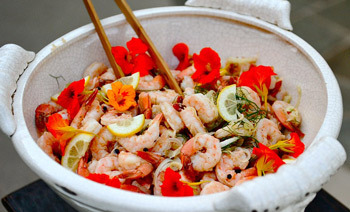 Photo: Seafood
Photo: Seafood Seafood, sea kale, lean sea fish - will satisfy the body's need for essential minerals and iodine.
- Legumes( peas, lentils, kidney beans) are sources of protein and vitamin E, essential for vascular health.
- Berries( cranberries, cranberries, gooseberries, black currants, strawberries, sea-buckthorn) - provide the body's need for vitamin C and help to eliminate swelling. Cherries and cherries are rich in bioflavonoids, which dissolve blood clots.
- Vegetable oils( olive, sunflower, linseed,) - contain vitamin E, show antioxidant properties.
- Low-fat dairy and sour-milk products are sources of protein and calcium.
- Dried fruits( dried apricots, prunes, raisins) - rich in magnesium, potassium and other useful trace elements.
When compiling the menu, you should consider the calorie content of the dishes. The norm of calorific value of the daily diet of an average person is approximately 30 kcal per 1 kg of body weight. For example, with a weight of 60 kg, the normal daily total calorie content should not exceed 1800 kcal. Going beyond this norm without adequate physical exertion can provoke the appearance of excess weight, which is one of the factors of the appearance of varicose veins.
From drinks are useful: green and herbal tea, mors, compote, fresh juices. But it is not recommended to drink food, drink better after half an hour after eating. A day should drink at least 1.5-2 liters of clean water.
List of prohibited products
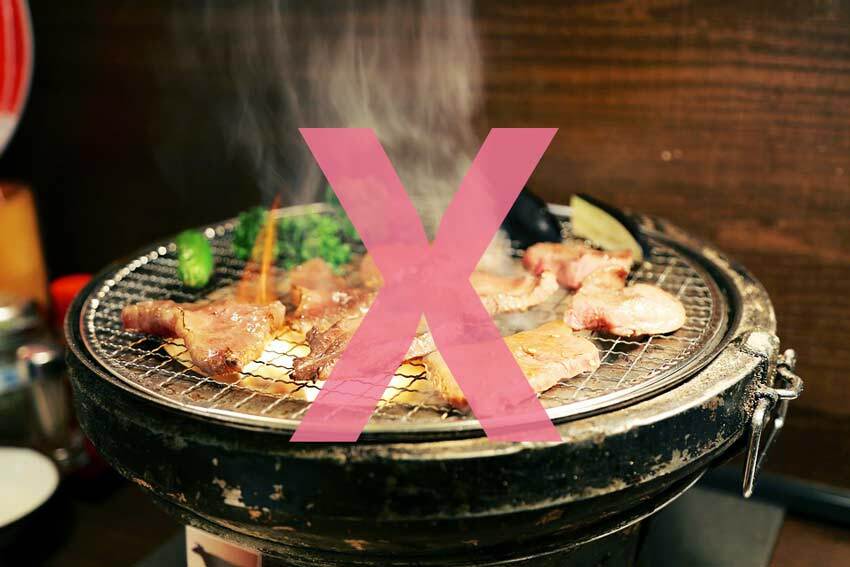 Photo: Fatty meat types
Photo: Fatty meat types - Fatty meat and fish varieties;
- Salted, spicy dishes and condiments;
- Smoked meat, marinades;
- Salo, cold;
- Sweets, chocolate;
- Strong tea and coffee;
- White bread;
- Flour and confectionery;
- Canned food, semi-finished products;
- Sweet carbonated drinks;
- Strong meat and fish broth;
- Fatty milk products( cream, sour cream, cheeses);
- Alcoholic beverages;
- It is not recommended to eat bananas, pomegranates and mango from fruit.
The use of salt should be reduced to a minimum. It is not recommended to add it during cooking, you can only slightly add some ready-made meals.
Despite the fairly common claim that vitamin K is indicated for use in varicose veins, this is far from the case. The fact that this vitamin can greatly thicken the blood, and this, in turn, is not an appropriate factor in the development of varicose veins.
It can intensify the manifestations of the disease. Therefore, it is necessary to exclude from the diet products with a high content of this component. Vitamin K is found in cauliflower, green tomatoes, walnuts, spinach, soybean oil, liver and eggs. This, of course, does not mean a complete rejection of the listed products, but involves limiting their use.
The nutrition menu for varicose
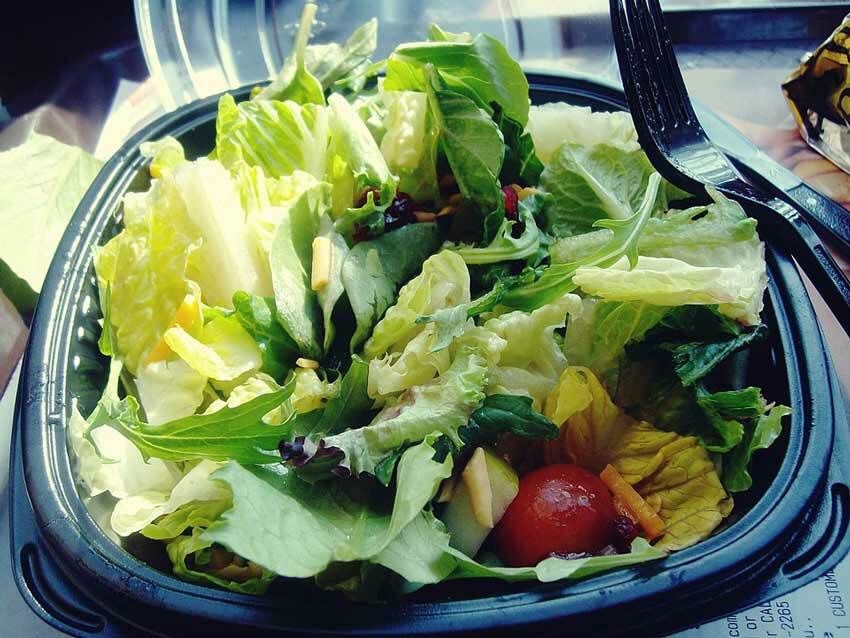 Photo: The nutrition menu for varicose veins
Photo: The nutrition menu for varicose veins Dieticians have developed a special diet that positively affects the condition of patients suffering from aggravation of varicose veins. Let us dwell in more detail on its features:
- The most significant dietary restrictions are on the 1-4 day diet. These days the patient is allowed to eat only fresh or boiled vegetables without salt and fruits. It is best to make salads from fresh vegetables, with the addition of a handful of nuts. Dressing for salads is prepared from a mixture of vegetable oil, lemon and vinegar. You should drink more pure water, green tea with lemon, unsweetened juices, fruit drinks.
- In the first 4 days of the diet, it is strictly forbidden to eat soups, meat, fish, sausages, potatoes, bread, muffins, eggs, cottage cheese, chocolate, sweets, cottage cheese.
- On the 5th day, 1 - 2 crumbs of rye bread can be added to the permitted products.
- On the 6th day of the diet in the menu you can include no more than 300 g of mashed potatoes in milk.
- During the 7th and 8th day, supplement the usual menu with a couple of rusks and 500 ml of milk( 2.5%) of fat content.
- On the 9th day, the diet includes 1 egg.
- From 10th to 13th day, 100g of low-fat cottage cheese is added to the menu on a daily basis.
- On the 14th day, diets are allowed to eat rice or buckwheat porridge on milk.
- Next in the menu twice a week include 100 grams of boiled beef.
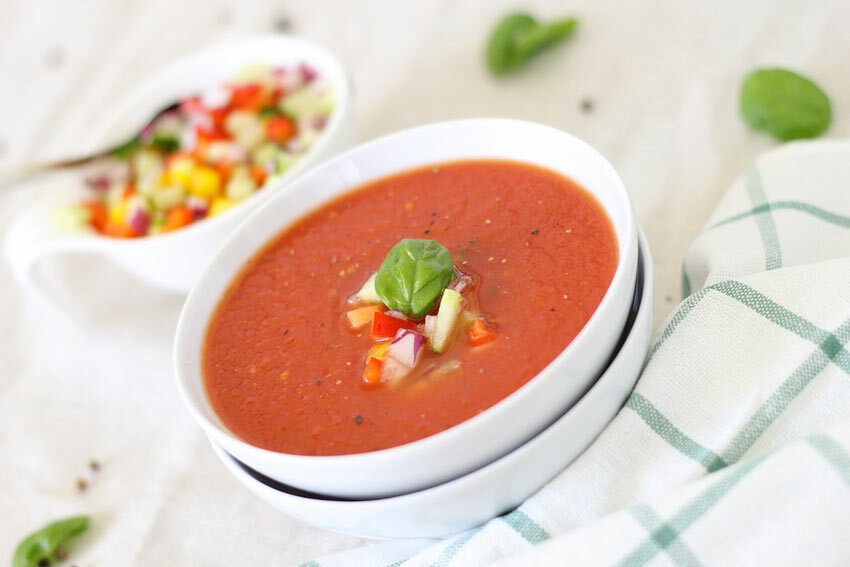 Photo: Soup
Photo: Soup After 25 days of such a diet, you can gradually return to the usual diet recommended for varicose veins. These restrictions are necessary to cope with acute symptoms, and to translate the disease into a state of remission. In the future, you can arrange two days a week for unloading days, taking as a basis the menu of the first days of the medical diet.
At a time when the disease is dying, food should be more diverse. In other words, when compiling a daily diet, you need to consider the body's need for proteins, fats, carbohydrates, and vitamins and minerals. The more diverse and rich, in terms of nutrient content, will be nutrition, the easier it will be for the body.
After all, with a properly balanced diet, he will receive a sufficient number of useful components that improve recovery and regeneration capabilities. Let's give an approximate menu for five days, recommended for patients with varicose veins of the lower extremities.
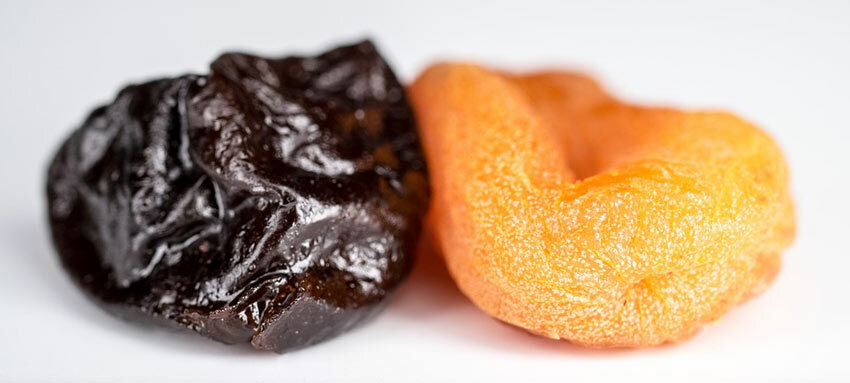 Photo: dried apricots and prunes
Photo: dried apricots and prunes Day one
- Breakfast: low-fat cottage cheese with dried apricots and prunes;
- Second breakfast: fruit mousse;
- Lunch: stewed vegetables( zucchini, tomatoes) with boiled fish;
- Snack: vegetable salad with vegetable oil;
- Dinner: boiled vegetables with steam chop.
Day Two
- Breakfast: steam cheese cakes with honey;
- Second breakfast: smoothies from orange, raspberries and honey;
- Lunch: okroshka and potato casserole;
- Snack: carrot-apple salad with natural low-fat yogurt;Dinner: boiled chicken breast with stewed cabbage.
Day 3
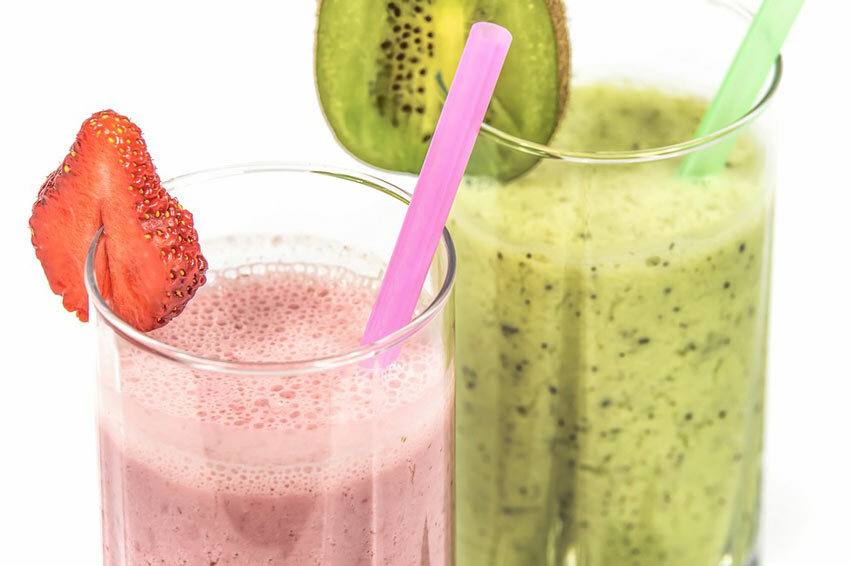 Photo: yogurt with berries
Photo: yogurt with berries - Breakfast: rice pudding with dried fruits( raisins, prunes);
- Second breakfast: yogurt with berries( raspberries, strawberries);
- Lunch: buckwheat soup with Borodino bread, tomatoes stuffed( minced meat is prepared from chicken breast or veal),
- Snack: fruit salad-cocktail with yoghurt( orange, apple, kiwi, grapes);
- Dinner: salmon steamed with stewed vegetables( bell pepper, eggplant, pumpkin).
Day 4
- Breakfast: buckwheat pancakes with orange jelly;
- Second breakfast: pear baked with honey;
- Lunch: vegetarian soup, vegetable casserole;
- Snack: cabbage salad with vegetable oil, bread with bran;
- Dinner: steam knels with rice garnish. Day
Day 5
- Breakfast: millet porridge with berries;
- Second breakfast: carrot cutlet with sour cream:
- Lunch: pickle, vegetarian pilaf with dried fruits;
- Snack: cottage cheese with honey;
- Dinner: vegetable stew with chicken breast.
This is a sample menu, which should be adhered to if there are problems with the veins. Half an hour after each meal is recommended to drink a green hour with lemon, compote, unsweetened mors, kissel. Black tea is better to drink with milk. As for coffee, it should be not strong and not more than 1 -2 small cups a day.
In the rest of the time, between meals try to drink more pure water, this will help reduce blood clotting and will help remove toxins from the body.


